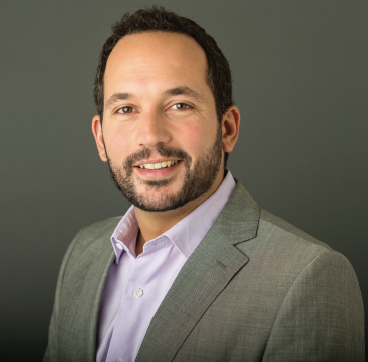Luca Allam looks forward to a future where planners target both humans and machines

For several decades now, the media planning discipline has been preoccupied with the question of ‘where’. The role of the media planner has been to seek out the most relevant opportunities to reach an advertiser’s target audience through paid media. Therefore, their role, skills, training and toolsets were designed to identify and buy advertising inventory around the content that best captured these target audiences’ attention. The nature of the planner’s role today may be fairly similar today but the skills have certainly changed.
Today, consumer behaviour is evolving faster than ever and the onus on the agency and media planner has evolved accordingly. The rapid growth of digital has placed it in the inner circle. It now sits at the heart of any media strategy, thanks to the technological developments and the invaluable layers of consumer insights it offers. Digital has also created a much shorter conversion process, allowing brands to close in on a sale much faster and demonstrably than through other media. Advertisers are now able to pinpoint consumer journeys across a transaction with far more accuracy than ever before, resulting in better precision in the targeting and pricing of ads. We’re more and more working in real-time with decisions being made on the basis of current, rather than past, data. Therefore, we are no longer asking the question of ‘where’ as much as we are asking ‘what’. As we can now identify where our audiences live at any given moment, we can test the type of messaging with which they will most engage.
Technological advances have certainly enabled planners to target better, maximising efficiency and minimising wastage. As we heard at this year’s PHD BrainScape conference, broad messages to groups of people that we think will buy something needn’t be the norm. Today, we are able to deliver very specific messages to an audience which has a high interest in the product or service, effectively delivering the right ad, to the right person, at the right time and in the right context. This relevance and accuracy are prime weapons against the threat of ad-blockers but technology will throw more curve balls. The forthcoming proliferation of virtual personal assistants (VPAs) will see technology further infiltrating our lives, with artificial intelligence (AI) automating more of our decision-making process and purchasing acts.
The planners of tomorrow will speak the language of VPAs in order to influence algorithms and ensure the brands they represent rise above the rest when intelligent machines make purchase decisions on our behalf. Therefore, marketers need not worry about automation taking over their jobs but, rather, learn how to utilise it to further enhance their brands’ connections with consumers – be they humans or machines. AI will undoubtedly disrupt every industry, as we’ve already seen in ours with the rise of programmatic media. And future generations will perform jobs that haven’t even been created yet.
There is an upside to this technological invasion. Leaving mundane tasks to machines, agency professionals will become freer to perform the creative and strategic elements of the marketing function. They will also be the technological architects for clients, building the infrastructure that allows them to turnaround messaging on the fly across multiple channels. With predictive marketing around the corner, we will stop looking at the past for direction and focus on where consumers are heading in the future in order to meet them there.
The early signs of this are already here with tag management solutions, data management platforms, visualisation software, specialised DSP activation platforms and ad exchanges. These allow planners to be strategic in the production and delivery of relevant messaging in real-time. Another sign is PHD’s recent appointment of Ben Samuel, the former head of platforms for agencies at Google, as its marketing technology officer. In this newly created role, Samuel will help our network’s clients navigate ever more sophisticated media technology, guiding them on how to stack those technologies together for better performance. He will leverage the platforms and data of our technology solutions to build the assets that clients need to boost the efficiency of their marketing investments.
The roadmap for the evolution of marketing has already been drawn and if the destination isn’t finalised yet, the direction is set. The media planners of 2016 will need to have technical and analytical capabilities to turn complex information into actionable planning directives. By the next decade, these planners will have to adapt to even greater seismic shifts in technological advancements. We need to learn the lessons from the past, one being that agencies and planners must evolve ahead of the rate of change. They must remain agile and dynamic, prepared to navigate through unchartered media and technology territory as their primary focus will no longer be ‘where’ but ‘who’ and ‘how’ they will execute the ‘what’.
Luca Allam is the general manager of PHD Dubai










